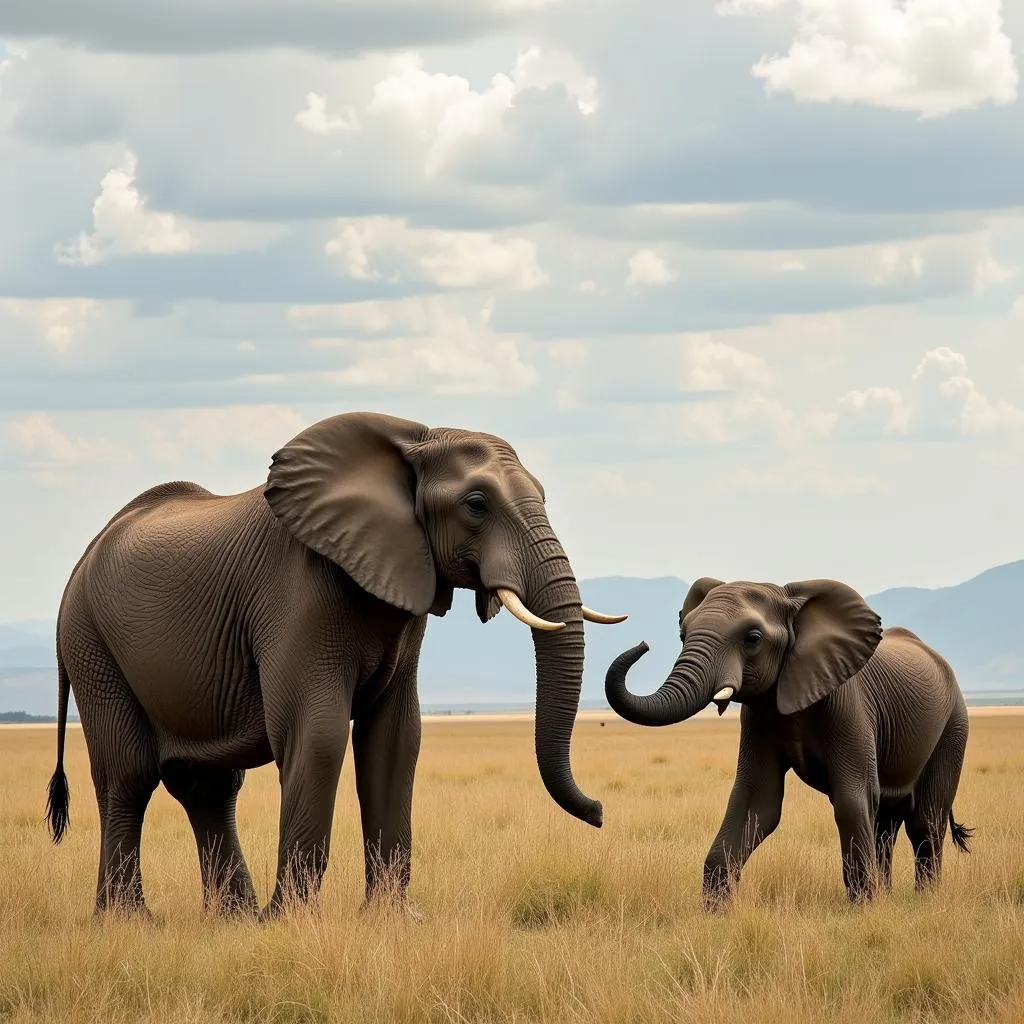Why Do African Elephant Ears Look Like Africa?
Have you ever noticed how an African elephant’s ears resemble the shape of the African continent? It’s a striking visual comparison that sparks curiosity and wonder about these majestic creatures. While the resemblance is a captivating coincidence, delving into the fascinating world of African elephants reveals a deeper story about adaptation, survival, and the remarkable connection between form and function in the animal kingdom.
The Anatomy of an Elephant’s Ear: More Than Just a Pretty Shape
An African elephant’s ears aren’t just aesthetically pleasing; they are marvels of evolutionary engineering. Unlike the smaller, rounder ears of their Asian cousins, African elephants boast enormous, fan-shaped ears that can grow up to 6 feet wide and weigh over 100 pounds. These massive appendages are supported by a complex network of blood vessels and thin skin, contributing to their distinctive shape and vital role in the elephant’s survival.
Keeping Cool on the Savanna: The Thermoregulatory Power of Ears
One of the most crucial functions of those large ears is thermoregulation. Living in the scorching heat of the African savanna, elephants generate a significant amount of body heat. Their enormous ears act like giant radiators, effectively dissipating heat and helping them stay cool.
When an elephant flaps its ears, it creates air currents that flow over the blood vessels close to the surface of the skin. This process, similar to how a car radiator works, allows heat to escape from the blood, effectively lowering the elephant’s body temperature. In essence, their ears are a natural air conditioning system, essential for survival in hot climates.
Beyond Cooling: The Sensory World of Elephant Ears
The function of an elephant’s ears extends far beyond temperature control. They also play a crucial role in communication and sensory perception. Elephants have exceptional hearing, capable of detecting low-frequency sounds inaudible to the human ear. These low-frequency sounds, often used for long-distance communication, travel through the ground and are picked up by the sensitive skin on an elephant’s feet and trunk.
 African Elephant Communicating with Herd
African Elephant Communicating with Herd
Their large ears act like acoustic amplifiers, capturing these sound waves and channeling them to the inner ear. This heightened sense of hearing allows elephants to communicate over vast distances, strengthening social bonds and aiding in the detection of potential threats.
A Matter of Survival: Distinguishing Features of African Elephants
The size and shape of an elephant’s ears aren’t merely coincidental; they’re the result of millions of years of evolution, driven by the need to survive in challenging environments. The African bush elephant, the largest land mammal on Earth, lives in hotter and drier climates than its Asian counterparts, necessitating larger ears for more efficient cooling. This adaptation highlights the remarkable interplay between an animal’s physical characteristics and its environment.
More Than Just a Resemblance: Celebrating the Wonder of African Elephants
While the resemblance between an African elephant’s ears and the shape of Africa is a captivating coincidence, it serves as a reminder of the intricate beauty and functionality found in nature. Understanding the crucial role these ears play in an elephant’s survival enhances our appreciation for these magnificent creatures. As we delve deeper into the world of African elephants, we uncover a fascinating tapestry of evolution, adaptation, and the delicate balance of life on our planet.
FAQs About African Elephant Ears
1. Why are African elephant ears bigger than Asian elephant ears?
African elephants have larger ears than Asian elephants primarily for thermoregulation. They live in hotter, drier climates and require larger ears to dissipate heat effectively.
2. Can elephants hear with their feet?
While elephants don’t hear with their feet in the traditional sense, the sensitive skin on their feet can detect low-frequency vibrations traveling through the ground. These vibrations are then transmitted to the inner ear, providing additional auditory information.
3. How do elephants use their ears for communication?
Elephants use their ears to communicate in several ways. They can flap their ears to create loud sounds, signaling warnings or attracting mates. Additionally, their large ears help amplify low-frequency sounds used for long-distance communication.
4. Are elephant ears sensitive to touch?
Yes, elephant ears are very sensitive to touch. The thin skin and numerous blood vessels make them susceptible to injury.
5. Do all African elephants have the same ear shape?
While the overall shape of African elephant ears is similar, there can be slight variations between individuals and subspecies. For instance, forest elephants tend to have slightly smaller and rounder ears compared to bush elephants.
Explore More About African Wildlife
-
Interested in learning about the African elephant population distribution? Check out this informative article: african elephant population by country.
-
Curious about the specific genus of African bush elephants? Discover more about their classification here: african bush elephant genus.
-
For captivating African-inspired decor, take a look at these beautiful decorative plates: african decorative plates.
We hope this article has shed light on the intriguing world of African elephants and their remarkable ears. From their vital role in thermoregulation to their contribution to communication and sensory perception, these iconic features are a testament to the power of natural selection and the incredible diversity of life on Earth.
Need further assistance? Contact us at: +255768904061, [email protected], or visit us at Mbarali DC Mawindi, Kangaga, Tanzania. Our dedicated customer service team is available 24/7.

